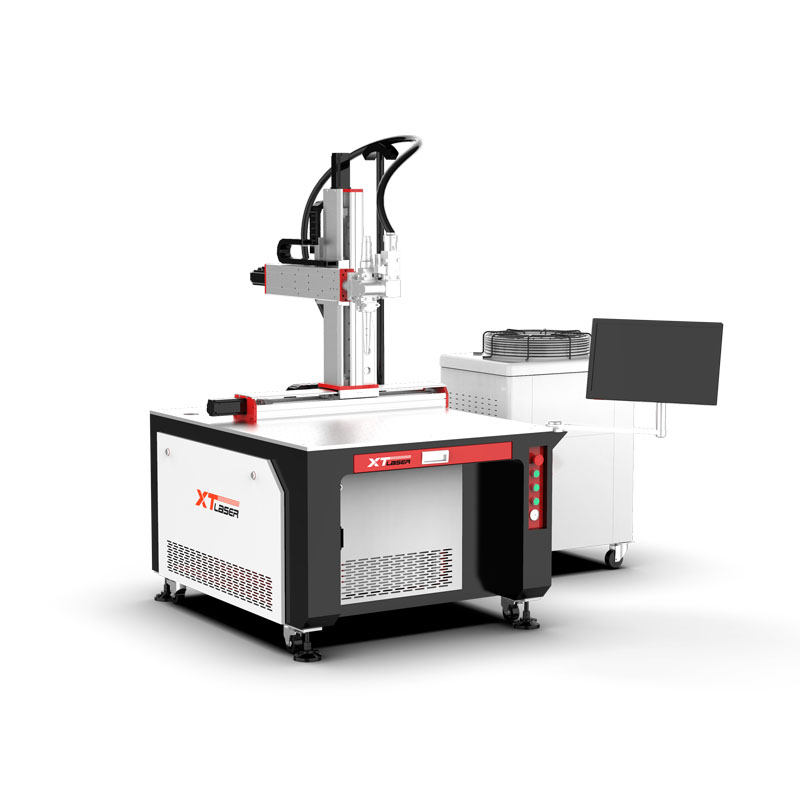Choosing Wisely: Factors Influencing the Selection of Automatic Welding Machines
2024-03-13
In the world of manufacturing, selecting the right equipment is critical to achieving optimal performance, efficiency, and quality in production processes. When it comes to automatic welding, the choice of welding machine can significantly impact the outcome of welding operations. Numerous factors must be carefully considered to ensure that the selected automatic welding machine is well-suited for the specific application at hand. In this blog, we'll explore the key factors that influence the selection of an automatic welding machine for a particular application, helping manufacturers make informed decisions and achieve successful welding outcomes.
1. Welding Process:
The first factor to consider when selecting an automatic welding machine is the welding process required for the application. Different welding processes, such as gas metal arc welding (GMAW), gas tungsten arc welding (GTAW), flux-cored arc welding (FCAW), and submerged arc welding (SAW), offer unique advantages and are suitable for specific applications. Manufacturers must choose an automatic welding machine that supports the desired welding process to achieve optimal results.
2. Material Type and Thickness:
The material type and thickness of the workpiece being welded are critical considerations in selecting an automatic welding machine. Different materials, such as steel, aluminum, stainless steel, and exotic alloys, require specific welding techniques and parameters. Additionally, the thickness of the material influences the welding process and machine requirements. Manufacturers must ensure that the selected automatic welding machine is compatible with the material type and thickness of the workpiece.
3. Weld Joint Configuration:
The configuration of the weld joint, including its geometry and accessibility, plays a crucial role in determining the suitability of an automatic welding machine. Complex joint configurations may require specialized welding equipment, such as robotic welding systems with articulated arms and multi-axis motion capabilities, to ensure proper weld placement and coverage. Manufacturers must assess the weld joint configuration and select an automatic welding machine that can accommodate it effectively.
4. Production Volume and Throughput:
The anticipated production volume and throughput requirements of the application are significant factors in choosing an automatic welding machine. High-volume production environments may benefit from high-speed welding machines with continuous operation capabilities, while low-volume production may require more flexible and versatile welding systems. Manufacturers must evaluate production requirements and select an automatic welding machine that can meet throughput demands efficiently.
5. Weld Quality and Specifications:
Achieving weld quality that meets industry standards and specifications is essential in many applications, such as automotive, aerospace, and structural fabrication. Manufacturers must consider the desired weld quality, including factors such as weld strength, integrity, and appearance, when selecting an automatic welding machine. Machines with advanced control systems, monitoring capabilities, and quality assurance features may be necessary to ensure compliance with weld specifications.
6. Automation Integration:
For seamless integration into existing manufacturing processes, manufacturers must consider the automation capabilities of the selected automatic welding machine. Compatibility with robotic automation systems, programmable logic controllers (PLCs), and computer-aided manufacturing (CAM) software is essential for optimizing workflow efficiency and minimizing downtime. Manufacturers should choose an automatic welding machine that offers seamless integration with automation systems to maximize productivity and operational efficiency.
7. Budget and Cost Considerations:
Budgetary constraints and cost considerations are significant factors that influence the selection of an automatic welding machine. Manufacturers must evaluate the initial investment cost, as well as ongoing maintenance, operating, and training expenses associated with the machine. While cost-effective solutions may be appealing, manufacturers must balance upfront costs with long-term benefits and performance to ensure a sound return on investment.
Conclusion:
In conclusion, selecting the right automatic welding machine for a specific application requires careful consideration of various factors, including welding process, material type and thickness, weld joint configuration, production volume and throughput, weld quality and specifications, automation integration, and budget and cost considerations. By thoroughly assessing these factors and choosing a welding machine that aligns with the unique requirements of the application, manufacturers can optimize welding performance, efficiency, and quality in their production processes.



